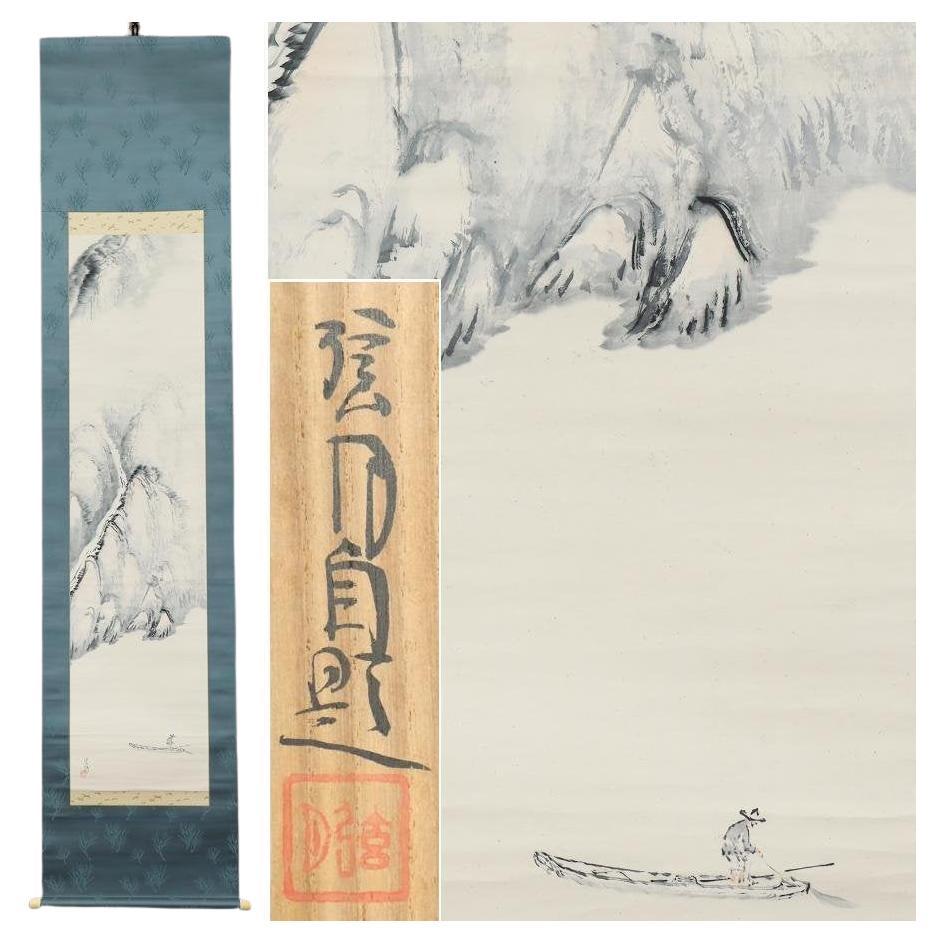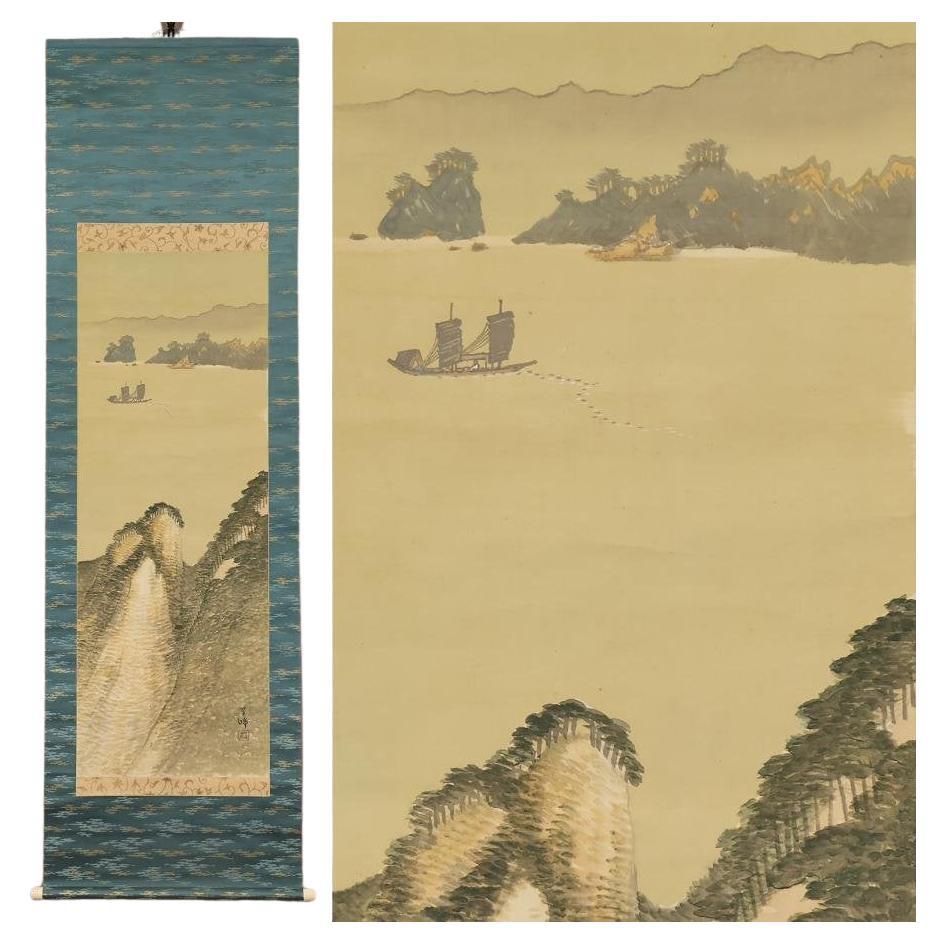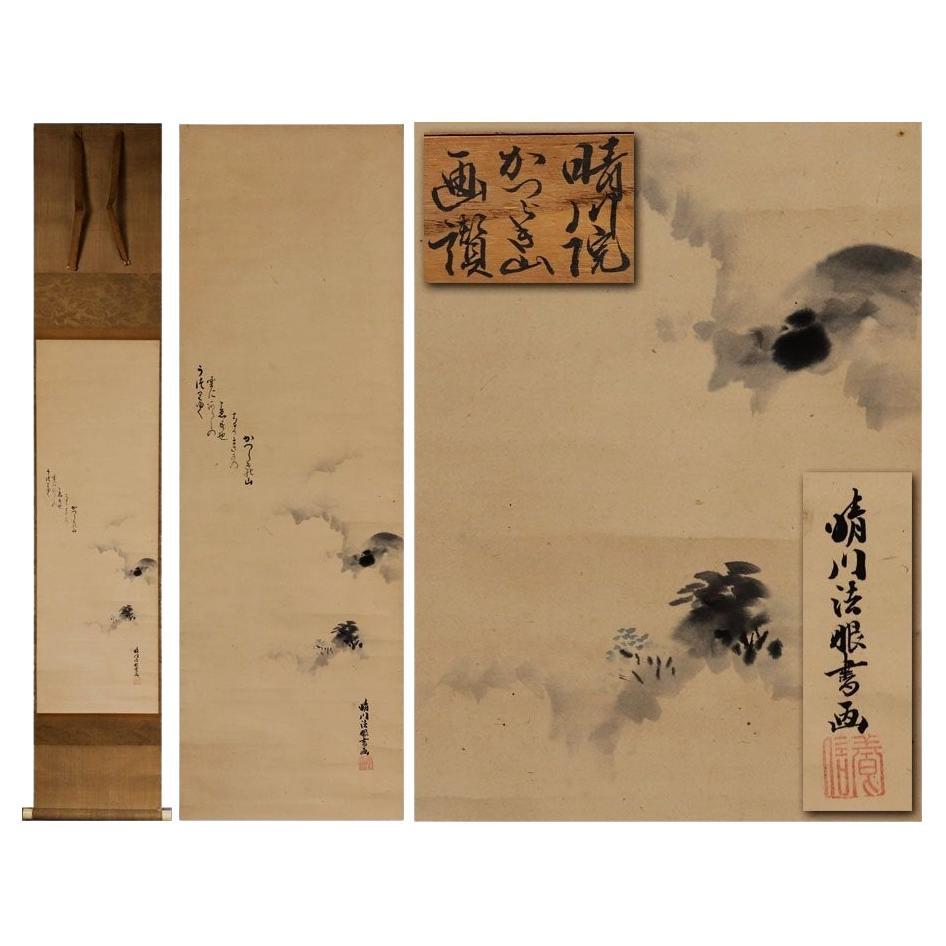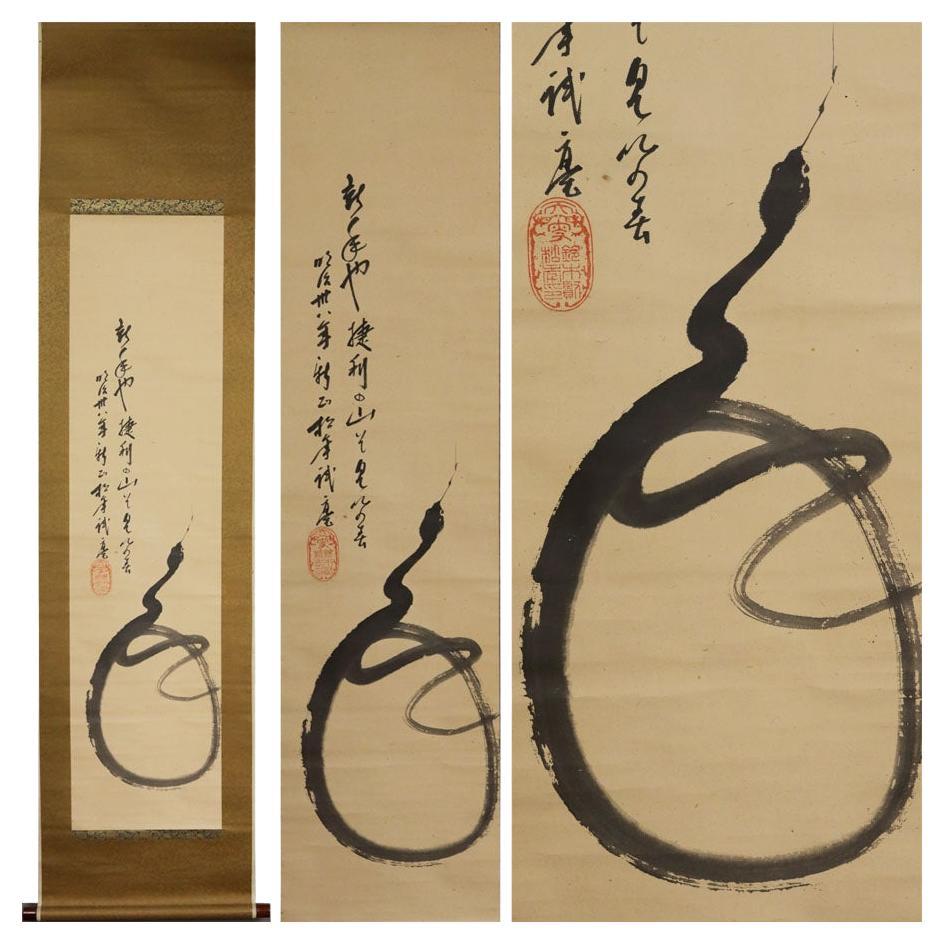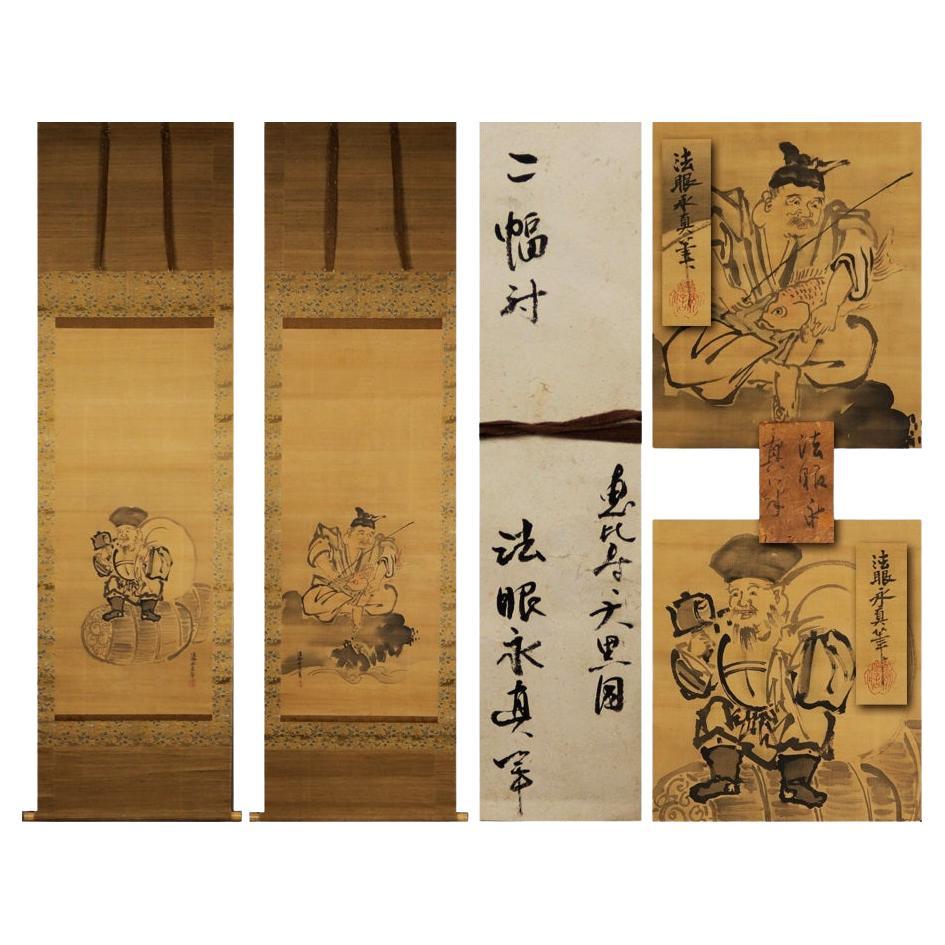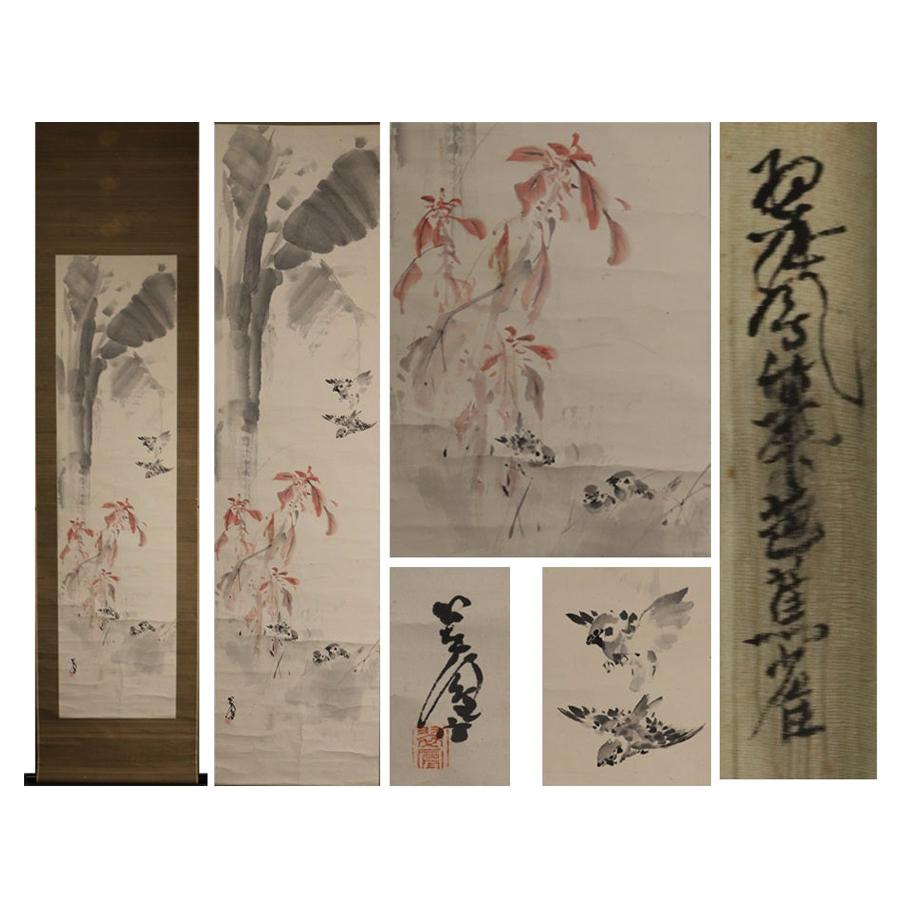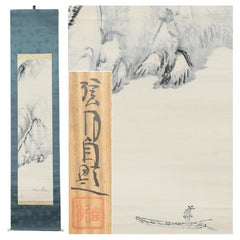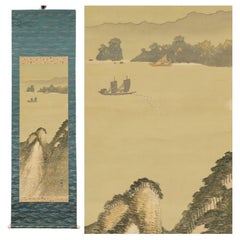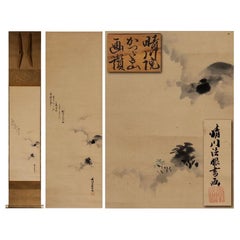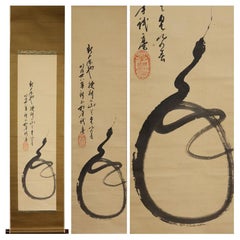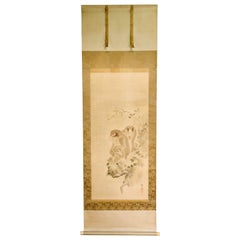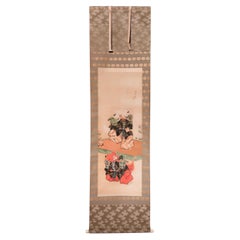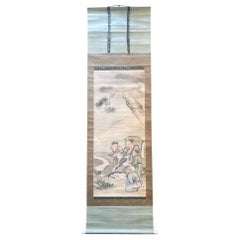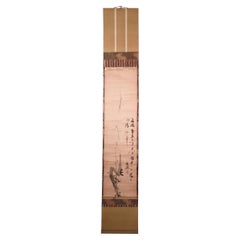Items Similar to Japanese PAinting Taisho Period Scroll Head and Cane Nihonga Otani Kubutsu
Want more images or videos?
Request additional images or videos from the seller
1 of 7
Japanese PAinting Taisho Period Scroll Head and Cane Nihonga Otani Kubutsu
$1,246.01
$1,557.5120% Off
£918.88
£1,148.6120% Off
€1,038.40
€1,29820% Off
CA$1,720.73
CA$2,150.9120% Off
A$1,888.05
A$2,360.0620% Off
CHF 988.12
CHF 1,235.1520% Off
MX$23,235.51
MX$29,044.3920% Off
NOK 12,448.80
NOK 15,56120% Off
SEK 11,660.16
SEK 14,575.2020% Off
DKK 7,908.69
DKK 9,885.8620% Off
About the Item
[Otani Kubutsu]
1875-1943, a monk of the Otani school of the Shinshu sect (23rd head of Higashi Honganji Temple) during the Meiji-Showa period.
Dharma name: Shonyo. Literary name: Kōen.
Number: Gumine. Haiku name: Kubutsu.
The second son of Gennyo Shonin, he traveled throughout the region to encourage his disciples and to celebrate the 650th anniversary of Shinran's death.
He studied painting with Seiho Takeuchi, and studied haiku with Shiki, Kyoshi, and others.
He was also known as an elegant person who was well versed in calligraphy, painting, and haiku.
■Paper /Handpainted
■Condition
: Some stains, scratches, etc.
■Dimensions
Axis dimensions: approx. 193.5cm x approx. 56.5cm.
Main paper dimensions: approx. 110.5cm x approx. 42.5cm.
■Inscriptions
There are inscriptions and inscriptions, etc. as shown.
■Box
box
- Dimensions:Height: 76.19 in (193.5 cm)Width: 22.25 in (56.5 cm)Depth: 0.04 in (1 mm)
- Style:Taisho (Of the Period)
- Materials and Techniques:
- Period:
- Date of Manufacture:20th c
- Condition:Wear consistent with age and use.
- Seller Location:Amsterdam, NL
- Reference Number:Seller: 901stDibs: LU4863237100682
About the Seller
5.0
Gold Seller
Premium sellers maintaining a 4.3+ rating and 24-hour response times
Established in 2015
1stDibs seller since 2019
268 sales on 1stDibs
Typical response time: 5 hours
- ShippingRetrieving quote...Shipping from: Amsterdam, Netherlands
- Return Policy
Authenticity Guarantee
In the unlikely event there’s an issue with an item’s authenticity, contact us within 1 year for a full refund. DetailsMoney-Back Guarantee
If your item is not as described, is damaged in transit, or does not arrive, contact us within 7 days for a full refund. Details24-Hour Cancellation
You have a 24-hour grace period in which to reconsider your purchase, with no questions asked.Vetted Professional Sellers
Our world-class sellers must adhere to strict standards for service and quality, maintaining the integrity of our listings.Price-Match Guarantee
If you find that a seller listed the same item for a lower price elsewhere, we’ll match it.Trusted Global Delivery
Our best-in-class carrier network provides specialized shipping options worldwide, including custom delivery.More From This Seller
View AllJapanese Painting Taisho / Showa Period Scroll by Yazawa Gengetsu Landscape
Located in Amsterdam, Noord Holland
[Authentic work] ◆ Gengetsu Yazawa ◆ Mountain and Lake Off Day ◆ box ◆ Landscape ◆ Nagano Prefecture ◆ Handwritten ◆ Paperback ◆ Hanging scroll ◆
Gengetsu Yazawa
Art yearbook appr...
Category
Vintage 1930s Taisho Paintings
Materials
Silk
$1,812 Sale Price
20% Off
Japanese Painting Taisho Period Scroll Head and Cane Nihonga Suisho Nishiyama
Located in Amsterdam, Noord Holland
[Authentic work] ◆ Suisho Nishiyama ◆ Landscape ◆ Japanese painting ◆ Kyoto ◆ Master: Seiho Takeuchi ◆ Hand-painted ◆ Silk volume ◆ Hanging scroll ◆ Suisho Nishiyama
Suisho Nishiyam...
Category
Vintage 1930s Taisho Paintings
Materials
Silk
$1,725 Sale Price
20% Off
Lovely Japanese 18/19th c Edo Scroll Kano Osanobu Nihonga Painting Mountain
Located in Amsterdam, Noord Holland
Kano Osanobu (狩野養信)
Osanobu Kano (born August 18, 1796; died June 12, 1846) was the ninth painter of the Kobikicho Kano School in the Edo period. His common name was Shozaburo. His father was Naganobu KANO, and Tadanobu KANO was his son. His Go (pen name) was Osanobu Seisenin, Kaishinsai, and Gyokusen.
Brief Personal History
He was born the eldest son of Naganobu ISENIN during the Edo period. He was first sent to serve at Edo Castle at the age of 15, and it appears that he was apparently pushed by his father to perform various public tasks for the Kanon School. He kept a diary for 36 years, starting from the day before he first went into service at Edo Castle until the day before he died. The diary is entitles "Official Service Diary" (it consists of 52 volumes that are maintained at the Tokyo National Museum, and 4 volumes that are separately maintained at the different families), and have become the focus of a lot of attention in recent years for the detailed information they present on the daily life and work of a prestigious official painter. The reading of the characters of his name was originally "Takenobu"; however, with the birth of the first son of the Shongun Ieyoshi TOKUGAWA in 1813, whose name was Takechiyo, having a sylable with the same pronunciation of "Take"was deemed to be inappropriate, and was therefore changed to "Osanobu". Because Takenobu died the following year, after which he was referred to as Gyokujuin, Osanobu changed his pen name Gyokusen he had used until that point to Seisenin, in order to avoid using the same Chinese charcter pronounced alike. In 1819, he attained the second highest rank for a Buddhist priest, Hogen, and assumed the role of head of the family after his father passed away in 1828. In 1834 he attained the highest rank for a Buddhist priest, Hoin. He oversaw the rennovation of the wall paintings of Nishinomaru Palace of Edo Castle from 1838 to 1839, and Honmaru Palace of it from 1844 to 1846. It is thought that Osanobu later died due to the fatigue...
Category
Antique 18th Century Edo Paintings
Materials
Silk
$1,725 Sale Price
20% Off
Japanese Painting Meiji 1903 Scroll Suzuki Shoutoshi Nihonga New Year's Day 1903
Located in Amsterdam, Noord Holland
Product Description
This is a work drawn by Matsutoshi Suzuki on New Year's Day, 1903, as you can see.
The figure of the zodiac ``Snake'' and a jewel are depicted, and a poem of praise is attached to the top.
《Suzuki Shoutoshi》
Separate issue is a hundred times at first. A painter from Kyoto and a child of 100 years.
He learned painting techniques from his father and was good at landscapes, flowers, and birds.
He was a teacher at Kyoto Prefectural Painting School and Uemura Shoen...
Category
Antique Early 1900s Edo Paintings
Materials
Silk
$1,342 Sale Price
20% Off
Antique Japanese 17th c Edo Scroll Kano Yosanobu Buddhist Painting
Located in Amsterdam, Noord Holland
Eishin Kano's Ebisu/Great Country Map, double-width/comes with an old box.
The auspicious statues of Ebisu and Daikoku are standing in a double-width hanging scroll with a smiling fa...
Category
Antique 18th Century Edo Paintings
Materials
Silk
$3,453 Sale Price
20% Off
Artists Suiho Yano Showa Period Scroll Japan 20c Artist Nihonga
Located in Amsterdam, Noord Holland
As you can see, it is a work of "Basho / Sparrow" drawn by Midori Yano.
Under Basho, this work skillfully depicts the appearance of sparrows forming a flock and singing food.
«Su...
Category
20th Century Japanese Taisho Paintings and Screens
Materials
Silk
$1,142 Sale Price
20% Off
You May Also Like
Japanese Silk Scroll Painting of Moneys Edo Period Mori Tetsuzan
Located in Atlanta, GA
A Japanese mounted vertical hanging scroll painting by Mori Tetsuzan (Japanese, 1775-1841) circa 19th century Edo period. The watercolor and ink on silk ...
Category
Antique 19th Century Japanese Japonisme Paintings and Screens
Materials
Silk, Paper
Japanese Noh/Kabuki Shakkyo painting, Torii Kiyotada
Located in Point Richmond, CA
Japanese colors, gofun and metallics on silk painting of Noh/Kabuki Dancers, depicting two figures of actors dancing in the play Shakkyo portraying a pair of shishi (lions), one on a...
Category
Early 20th Century Japanese Meiji Paintings and Screens
Materials
Silk
Japanese Silk Scroll by Haruki Nanmei Edo Period
Located in Atlanta, GA
A Japanese hanging silk scroll by late Edo period painter Haruki Nanmei (1795-1878). The gouache painting was in the tradition of Kano school and depicts an old scholar dressed in lo...
Category
Antique 19th Century Japanese Edo Paintings and Screens
Materials
Silk, Paper
Japanese ink on paper painting of Plum Blossoms, Tani Buncho
Located in Point Richmond, CA
Japanese ink on paper painting of Plum Blossoms and Poem, scroll mounting, signature & single seal: Tani Buncho (1763 - 1840). A famous and prol...
Category
Antique 19th Century Japanese Meiji Paintings and Screens
Materials
Paper
Two Antique Japanese Hanging Scroll Paintings
Located in Atlanta, GA
Two Japanese scroll painting depicts scenes from the Tale of Genji (Genji-E), from Edo period. These painting were purchased from Odewara Shoten in the...
Category
Antique Early 19th Century Japanese Japonisme Paintings and Screens
Materials
Brocade, Paper
$4,800 / set
Large Antique Zen Japanese Ink Scroll After Sesson Shukei
Located in Atlanta, GA
A Japanese Sumi ink painting with light color wash mounted with brocade borders as a hanging scroll (Kakejiku). The painting depicts the famously eccentric Buddhist monks Hanshan and Shide (known in Japan as Kanzan and Jittoku). Often as a pair, they have been a popular motif in Japanese Zen painting...
Category
Antique 18th Century Japanese Japonisme Paintings and Screens
Materials
Silk, Paper
